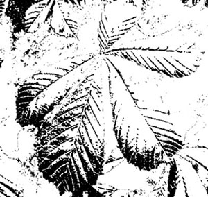|
COMMON
NAME |
SCIENTIFIC
NAME |
COMMENTS |
|
ALDER |
Alnus glutinosa |
Produces false cones which provide a good supply of bird
food in spring. Fast growing, particularly suited to boggy ground, - not suitable
for chalky soils. |
|
ALDER BUCKTHORN |
Frangula alnus |
Provides
habitat for the brimstone butterfly. Red berries which later mature
to black provide
food for visiting birds |
|
ASH |
Fraxinus excelsior |
Ash keys eaten by small mammals and birds |
|
BEECH |
Fagus
Sylvatica |
Forms thick shelter when used in hedges : widespread
use in Scotland for hedging, since leaves are retained until new
growth starts in late Spring; good food source for small mammals
when mature |
|
BIRCH |
Betula pubescens and Betula pendula |
Birds favour seed |
|
BLACKBERRY |
Rubus fruitcosa |
Basic browse for deer; birds food and nesting; insects,
shelter for small mammals |
|
BLACKTHORN |
Prunus spinosa |
Important for Butterflies; good nesting thicket. flowers very early in the year, and good source of nectar and insects
for birds in spring |
|
BROOM |
sarathamnus scoparius |
Important for Insects including butterflies |
|
COMMON SEA BUCKTHORN |
Hippophae rhamnoides |
Excellent hedging species for harsher areas. Its
fruit persists through winter so gives good supply of bird food.
Both male and female plants should be included in a hedge. |
|
COMMON SALLOW |
Salix cinerea ssp. Oleifolia |
Liked by deer for feeding; numerous insects on catkins
and leaves |
|
CRAB APPLE |
Malus sylvestris |
Exceptionally
important ecologically. It supports over ninety different species
and produces a crop
of fruit in late summer, important for
numerous species of birds and small mammals
Best grown as a small hedgerow tree and not trimmed:
excellent food source for insects. |
|
DOG ROSE |
Rosa canina |
Important for Birds on fruit; insects on flowers |
|
DOGWOOD |
Cornus sanguinea |
The berries are enjoyed by and attract wildlife. |
|
EARED WILLOW |
Salix aurita |
Liked by deer ; catkins and leaves important for
insects |
|
ELDER |
Sambucus nigra |
Birds on fruit; insects on flowers; poor hedgerow
tree for stock checking; capable of growing almost anywhere; very valuable in the informal wildlife
hedge |
|
ENGLISH ELM/
WYCH ELM |
Ulmus Procera/glabra |
Insects - white hairstreak, comma and large tortoiseshell
butterflies; nest sites for birds. Some naturaly disease resistant
English elms stilll in existence |
|
FIELD MAPLE |
Acer campestre |
Good shelter plant |
|
FIELD ROSE |
Rosa
arvensis |
Low
growing, clump forming shrub, which provides excellent food for
birds. |
|
GEAN OR WILD CHERRY |
Prunus ayium |
Important for Fruits for birds; Fruits and seeds for small mammals |
|
GOAT WILLOW |
Salix caprea |
Liked by deer ; insects on catkins and leaves |
|
GORSE |
Ulex europaeus |
Important for Insects ; nesting for linnets |
|
GUELDER ROSE |
See Viburnum opulus |
|
|
HAWTHORN |
Crataegus
monogyna |
Forms
the basis for many hedges : tough, fast growing, good source of
food for birds and insects. Mammals; birds for berries; many insects;
wood mouse eats fruit; good protection for nesting birds.
Hawthorn
flowers and fruits on
old growth, so trimming
should to be carried out very carefully, preferably only on alternate years. |
|
HAZEL |
Corylus avellana |
Slow growing, but valuable
in wildlife hedge.
It supports large variety of insects, produces nuts in August-September |
|
HOLLY |
Ilex aquifolium |
Fruits for birds, nesting cover, deer browse: only
females produce beries |
|
HONEYSUCKLE |
Lonicera periclymenum |
Important for Bees and other insects |
|
LIME |
Tilia cordata (small leafed)
Tilia platyphyllos (Large leafed) |
Useful food source for birds; although it can grow
to be a large tree, can usefully form part of hedge. |
|
PENDUNCULATE AND SESSILE OAK |
Quercus robur and Quercus petracea |
Probably the most important tree, capable of supporting
staggering amounts of wildlife; insects, birds, mammals, lichens |
|
PRIVET |
Ligustrum vulgare |
Dense
hedge plant which retains
foliage all year round, except in harsh winters, making
it an excellent refuge for wildlife. White flowers produced
in July are attractive
to insects. Black berries make it an extremely valuable food source for foraging birds.
Do not use the domestic variety .L ovalifolium |
|
ROWAN |
Sorbus aucuparia |
Insect
fauna, fruit for birds |
|
SPINDLE |
Euonymus europaeus |
Good host for bean aphid; Fruit poisonous to mammals |
|
SWEET BRIAR |
Rosa
rubiginosa |
Its
leaves and blooms form an important habitat for numerous species
of butterfly. It also produces hips, which are consumed by birds. |
|
SWEET CHESTNUT |
Castanea
sativa |
Good source of food for small mammals |
|
VIBURNUM |
V. opulus Guelder Rose |
Produces large, white flowers and red fleshy fruit
which attract a variety of animals Important for Birds; wood mouse attracted by
fruit; insects on flowers flower early, and nectar and pollen attract
insects |
|
VIBURNUM |
Viburnum lantana Wayfaring Tree |
Produces white flowers in May, followed by red berries in September . It attracts
wildlife all year round-important for birds; wood mouse attracted by
fruit; insects on flowers |
|
WESTERN GORSE |
Ulex gallii |
Important for insects |
|
WILD SERVICE TREE |
Sorbus torminalis |
|
|
WILD CHERRY |
Prunus Avium |
Also known as Gean (pronounced with hard ‘G’).
Important source of food for birds and small mammals |
|
WILD PEAR |
Pyrus pyraster |
Good source of food for birds and small mammals |
|
YEW |
Taxus baccata |
Forms thick
shelter hedge : all parts poisonous to mammals, so should
not be planted where livestock can get near |
